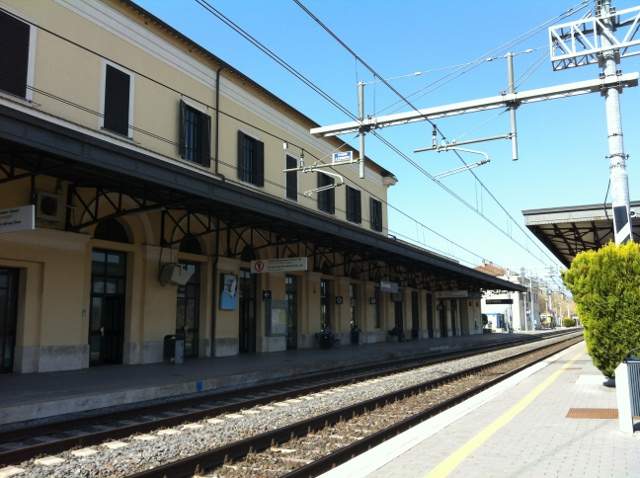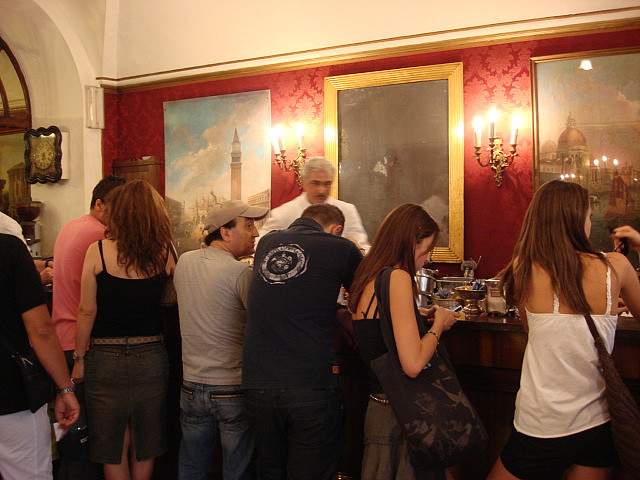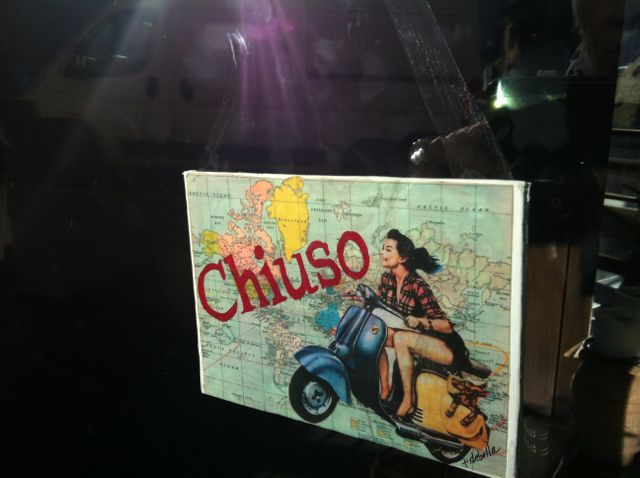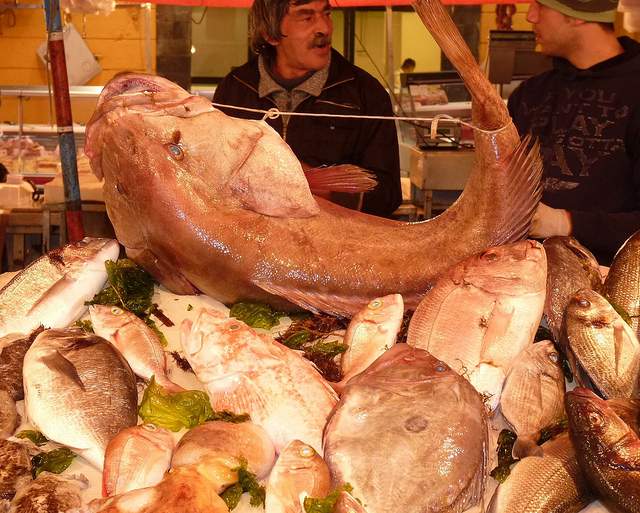In all my years traveling in Italy, most of what I’ve learned, I’ve learned by trial and error. Many times I’d wished someone had given me a “heads up” about what to expect in this sometimes crazy and always wonderful country. It’s my hope that armed with the following information, you’ll have what amounts to an angel riding on your shoulder, whispering in your ear, and showing you the way around some pitfalls that thwart many a foreign traveler.
Here are my top 5 stress-free travel tips for Italy (in order of their importance):
Tip #1 – Stamp Your Tickets (Biglietti), Prego!

Train Tickets: Do not, I repeat, do not neglect to stamp your ticket in one of the yellow or green machines located in front of and along the train platforms before boarding the train – the time/date stamp validates your ticket! This is the number one mistake foreign travelers make in Europe, and unfortunately, it can be one of the costliest. Failure to stamp your ticket could bring the kind of hassle (and possible fine) that could ruin your day or even your entire trip.
Bus tickets: Most tickets are interchangeable on buses, the Metro (subway), and trams for the duration of 70-90 minutes. On buses and trams the stamp machines are often located in the front, middle, and back entrances. On the Metro you can pass your ticket through the slot at automatic gates and get it back for more rides in that time period.
I can’t possibly say it enough…stamp, stamp, stamp! There are those who try to beat the system – gambling that the conductor will not ask to see their ticket. You might get away with it 9 out of 10 times, but trust me, a free ride isn’t worth the fine you could be issued – up to 100 euros in some cities.
Tip #2 – Weighing-In: The Supermarket

Flash back to my initiation into the world of the supermercato (I break into a sweat just thinking about it). After placing the entire contents of my cart onto the conveyor belt, I was severely admonished, and then confused and humiliated, banished back to the produce area to properly weigh my items!
Supermarkets and How They Work 101: Place your fruits and/or veggies in separate plastic bags, weigh them on the scale by punching in the corresponding code for that item, and then put the price stickers on the outside of each bag before proceeding to the checkout line. Save yourself the embarrassment that I had to endure: weigh them first, pay for them later.
Tip #3 – Ordering Coffee – It’s an Art Form

In Italy coffee (caffe) isn’t just a beverage, it’s a culture! The rule of thumb in an Italian bar is to pay first, drink later. In large cities, airports, and train stations, go to the cashier (cassa), tell them what you want, pay, and then bring the receipt to the counter. The barista may ask you again for your order or read the receipt and then serve you. If you would like to sit at a table, you may have to pay a “coperto” (cover charge). Usually (but not always) there are signs indicating the seats are for table service patrons only.
In smaller villages and towns things tend to be a little less formal. More often than not you will order and drink your coffee at the counter or table and then pay the cashier when you are finished. My advice to avoid any confusion: take a minute to observe others, and do as they do. For more information about how to order a proper coffee in Italy, read “Caffe Engima”.
Tip #4 – The “Siesta” System: Lunch and a Nap.

In cities such as Rome, Florence, and Milan, large department stores may remain open throughout the entire business day. Not so in smaller towns and cities – stores, local government offices, post offices, and banks (with the exception of bars and restaurants) – close around 13:00 (1:00 pm) and reopen after 16:00 (4:00 pm). If you need to fill a prescription, send a postcard, or buy milk, do so in the morning or you’ll have to wait until late in the afternoon. Bonus tip: The mad rush by locals thirty minutes prior to the lunch hour could result in long lines, so plan accordingly. Italy operates on this timetable, and therefore now so do you!
Tip #5 – Walmart Italia?
In Italy there is very little in the way of “one-stop shopping” – anticipate that you will be, quite literally, “running errands.” Below is a short list of where to buy items you may need during your travels. You could say it’s a guide to shopping smarter and more efficiently:
- Farmicia (Pharmacy) – Along with prescription drugs, you may only purchase over-the-counter medications such as aspirin or contact lens solution from a farmicista (pharmacist). A large green cross indicates a pharmacy’s location.
- Alimentari (Grocery stores) – These are usually small, Mom-and-Pop style grocers – perfect for picking up a bottle of local wine or some fresh mozzarella for dinner. Need more than that? Go to the supermercato.
- Macelleria (Butcher shop) – Where you buy meat.
- PanIficio or Panetteria (Bakery) – Freshly baked bread and Piazza Taglio (pan pizza by weight).
- Pasticceria (Pastry Shop) – Pastries, cakes, and cookies (paste, torte, biscotti).
- Gelateria (Gelato Shop) – Where you buy gelato, of course!
- Pescheria (Fish Market) – Buy seafood here.
- Mercato all’aperto (Open Air Market) – Each city and town has its “market day” where you can buy organic produce, meats, fish, and cheeses directly from the growers. Pick up a bouquet of fresh flowers, a milk foamer, new jeans, a bathmat…I can’t actually think of anything you can’t find at the mercato!
A Sense of Humor: Imperativo!
Part of the fun and excitement of travel is learning from your mistakes, so I certainly don’t want to remove all
the enjoyment out of your Italian adventure! My hope is that these few tips will give you a slight advantage, save you time and money, and make your experience in Italy just a little more serene. I only wish I could solve all your travel difficulties – such as dishonest taxi drivers, rude waiters, and transit strikes – but, hey, I’m no miracle-worker! Buon viaggo!
Freelance travel writer, Toni DeBella, divides her time between San Francisco and Orvieto, Italy and also writes about her adventures on her blog, Orvieto or Bust; a collection of stories and articles based on her experiences of Italy, travel and life in a small hill town in Umbria.
Photo credits: 2, 3, 5, all others courtesy of the author and may not be used without permission.
